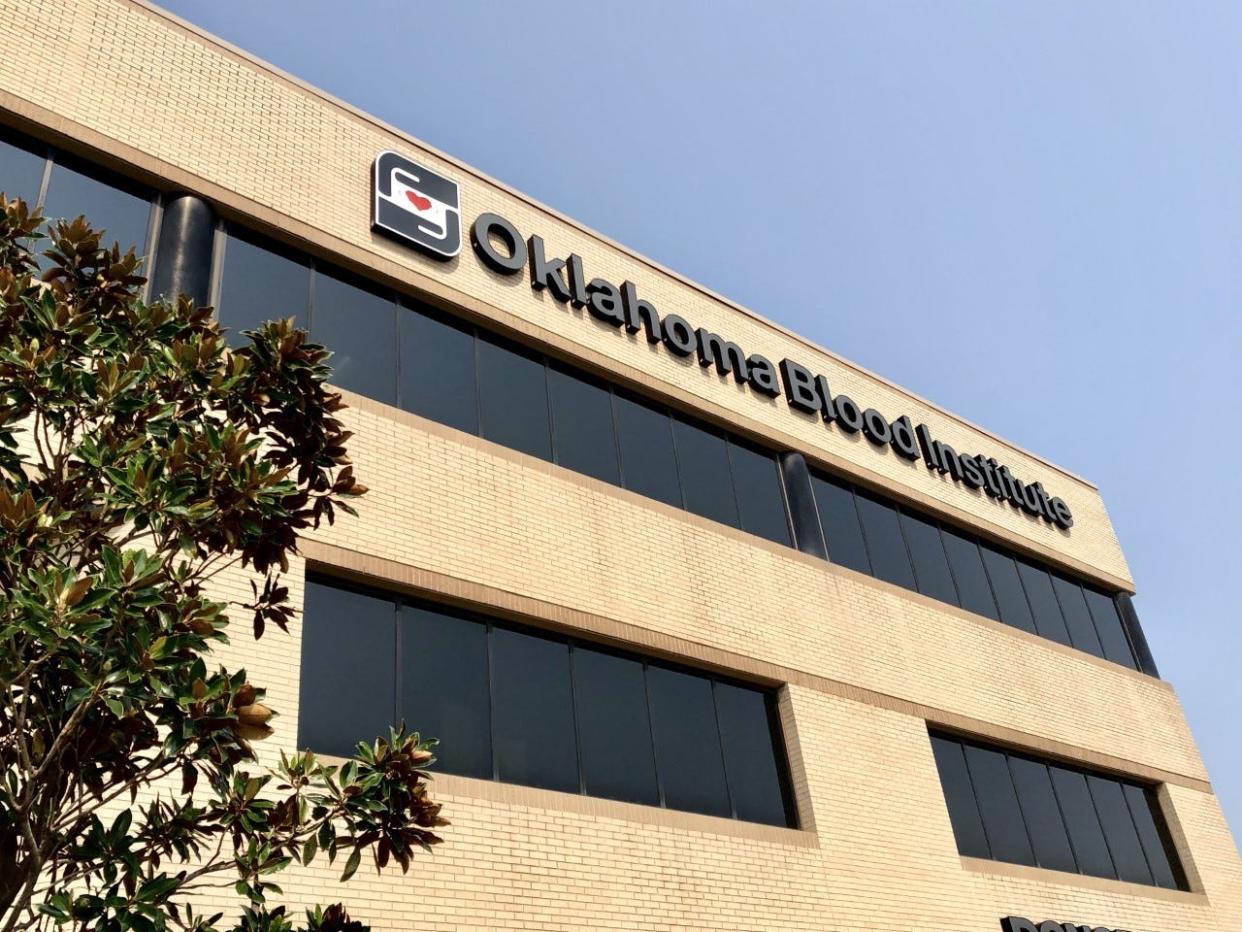After rocky two years, Oklahoman blood donations find a new normal

Kim van Antwerpen, who had COVID-19 in early February, had already donated blood twice by the end of March.
As chief operations officer of the Oklahoma Blood Institute, van Antwerpen knew her antibodies could be of help to other patients.
“I have had friends with COVID,” she said. “We had a co-worker die. So, when I had it, the first thing I wanted to do was help someone in their recovery process.”
Van Antwerpen contracted a light case despite being vaccinated and getting the booster shot.
“I guess because I’m so close to it, it was not unexpected,” she said. “The omicron variant was so contagious and running rampant.”
“If you have recovered from COVID, you can give blood,” said Dr. Dale Bratzler, chief quality officer for OU Health. “We encourage it, as it might have antibodies. We can use that in treatment.”
The blood supply took a hit when the pandemic started, said Dr. John Armitage, OBI’s president and CEO.
“At first, everything crashed to the ground in terms of cancelations. People started working from home, schools closed. That was a huge hustle, to maintain the blood supply.”
But even with mobile blood drives canceled, “a lot of donors found us in alternative locations,” Armitage said.
OBI maintains 17 donor rooms, which are fixed sites throughout its coverage area that includes all the Texas Panhandle, every county in Oklahoma, the western half of Arkansas, and Wichita Falls, Texas.
Since the pandemic started, Armitage said, the donor rooms “have performed better than our mobile operations have.”
The first couple of months of the pandemic were an “acute” phase, Armitage said, though the widespread canceling of elective surgeries took some pressure off the blood supply.
Then came the maintenance phase, he said, when OBI relied on new sponsors, looked to news media support and attracted donors by offering antibody screenings.
“Our staff really got into the mode of extra work all the time,” Armitage said.
“We are used to facing shortages due to weather and during holidays, but this was very wearing, very stressful.”
OBI operations also were stressed by absenteeism among the 1,000 employees as they caught the virus or had to quarantine after exposure.
Antibody testing was popular because people wanted to know if they had had the infection, Armitage said, and most stayed to donate blood, as well.
“We did add a lot of work and expense to do that screening for antibodies.”
Routine antibody testing was phased out as more screening opportunities became available elsewhere, Armitage said.
OBI continues to collect donor antibodies for the creation of convalescent plasma, even with manufactured monoclonal antibodies now widely in use. Armitage said it can be stored frozen for a year, and can be a stop-gap measure in case future mutations of the virus make the monoclonals less effective.
The treatment of COVID itself had little impact on the blood supply, Bratzler said, because most COVID patients do not require transfusions. Donated blood is used primarily by trauma patients and cancer patients.
“Early on, donations dropped considerably because people did not want to go out and be exposed to other people,” Bratzler said.
OBI took precautions to protect donors, Armitage said.
“We took furniture out to increase social distancing. We did temperature checks at the beginning. We did surface wipe-downs and wore masks. With appointments, it was easier to separate people.”
OBI also addressed concerns among potential donors and recipients.
“Some people were worried they would get COVID from transfusions,” Armitage said.
“A few people gave blood for themselves if they had surgery scheduled. We saw the first increase in that type of donation since the HIV crisis in the 1980s.”
But COVID, Armitage said, “is not a blood-borne virus, it’s a respiratory virus.”
Throughout the surges of the virus that have made the past two years a roller-coaster ride, Armitage said, “the strength of compassion was in evidence. We got to see really good people behave really well. Anybody who gave blood kept the medical operations going.”
An outcome of such generosity is that “there were no canceled surgeries at our hospitals,” Armitage said. “It was tight at times. But we collected only 1 or 2 percent less than in previous years.”
This year, Armitage said, “we are more stable. We have put more resources into social media, and new programs. We are hoping we can win back donors who are taking some time off from donating. I think it’s a journey for us to evolve into what the new normal is.”
Van Antwerpen said she became a blood donor even before joining OBI, after her twins were born prematurely and needed blood.
“I was a blood donor from then on,” she said. “It doesn’t take a lot of time, and it feels good to give back in that way.”
This article originally appeared on Oklahoman: Pandemic causes blood donations in Oklahoma to evolve

